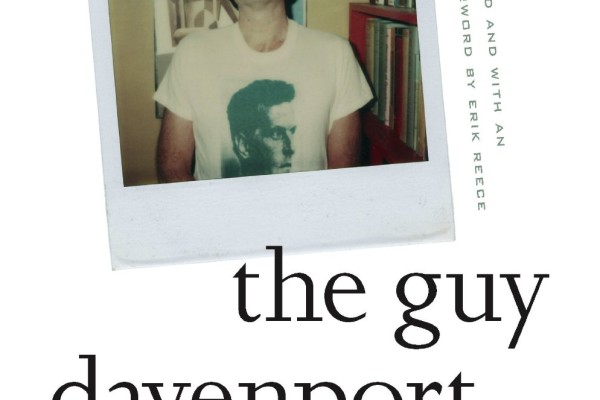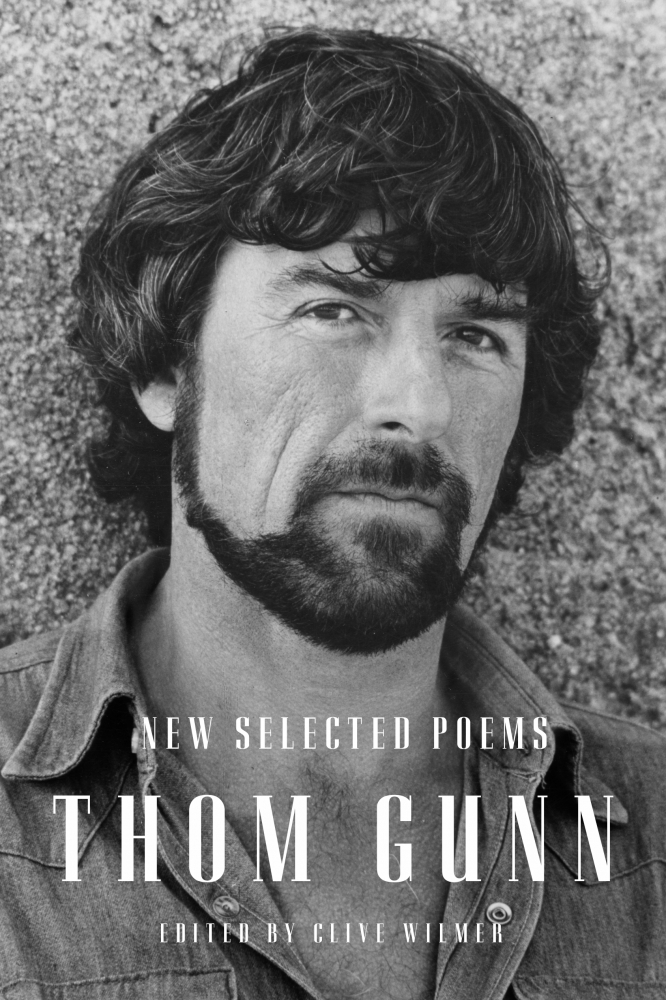Review by Adam Winters
“True imagination makes up nothing; it is a way of seeing the world.”
— Guy Davenport
Reading Guy Davenport is a joyous occasion for the curious. We recognize in his fictions, essays, and illustrations a great terrain of mind spanning the polis of archaic Greece to the ascetic space of Wittgenstein’s room in 1940s Cambridge. We trust that mind on the page. Freeman Dyson explained one rainy Manhattan evening how Wittgenstein called him upstairs to that room in 1946 or ‘47. The space was empty, Dyson said, no bed nor linens nor clothes, though a couple books and a wooden chair on its back, which the young physicist was instructed to sit in quietly. So he sat, back to the ground, for what seemed an eternity before leaving in silence. Davenport’s account, collected in the exquisite Geography of the Imagination,[i] reads “He held his lectures in his room, in the continental manner. As there was no furniture except an army cot, a folding chair, a safe (for the Zettel),[ii] and a card table, the students brought their own chairs.” Wittgenstein will bump into Max Brod and Kafka while working on an early flying machine at an air show in the story “The Aeroplanes at Brescia,” based on Kafka’s own early fragment of the same name about a show he attended along with Max and Otto Brod in 1909. The date is not incidental. An astute eye may see in the story a reference to Marinetti, the Italian poet who authored the Futurist Manifesto earlier that same year. Or, Rilke, soon one beneficiary of Wittgenstein’s inheritance, who had advanced poetry of fin-de-siècle Paris after daily visits to the Cézanne room of the 1907 Salon d’Automne. Or, Cézanne—see—dense allusion interconnects and circles (Davenport’s “golden honeycomb”), leitmotivs to consider in his work.
Let us consider a recurring concern. Throughout the essays collected in Geography of the Imagination, Davenport mentions a major event of our age he calls the Renaissance of 1910. The event’s leading figures appear again and again in his fiction. Some are well known. Others wither in the decay of memory, if they were even recognized in their time. Nonetheless, the author has planted a seed of obsessive searching; in the next breath he will introduce another theme—by 1916 an explosion will end that very Renaissance. Davenport explicates with precision in the essay, “Narrative Tone and Form.”
Davenport: There was a Renaissance around 1910 in which the nature of all the arts changed. By 1916 this springtime was blighted by the World War, the tragic effects of which cannot be overestimated. Nor can any understanding be achieved of twentieth-century art if the work under consideration is not kept against the background of the war which extinguished European culture. (Students reading Pound’s “eye-deep in hell” automatically think it is an allusion to Dante until you tell them about trenches.) Accuracy in such matters being impossible, we can say nevertheless that the brilliant experimental period in twentieth-century art was stopped short in 1916. Charles Ives[iii] had written his best music by then; Picasso had become Picasso; Pound, Pound; Joyce, Joyce. Except for individual talents, already in development before 1916, moving on to full maturity, the century was over in its sixteenth year.
As Marjorie Perloff stated so eloquently, “This is vintage Davenport: the mix of remarkable precision—names and dates—with large-scale generalization, of historic pinpointing with evaluative conclusion.” Of course we must ask, what is this historic innovation?
You must look elsewhere to find Davenport’s tidy one-sentence statement on the matter and I would not want to kill a great potboiler. Turns out, Davenport was a lover of detective stories. In 2002, Paris Review asked him how he spent his days. “Downstairs, writing and drawing; upstairs, painting, or reading Rex Stout, P.G. Wodehouse, and Georges Simenon.” As did Wittgenstein, so says Davenport, “He read Tolstoy (always getting bogged down) and the Gospels and bales of detective stories,” especially those of Norbert Davis. On the subject of the great anti-philosopher, Davenport made an extraordinary point, “Physics in Wittgenstein’s lifetime was going back to Heraclitus (a clue to cracking the atom was found in Lucretius by Niels Bohr); so was art; so was architecture…The more we read Wittgenstein the more we feel that he is before Heraclitus,” lines of inquiry worth pursuing. Shall we indulge a moment?
In 1905, a twenty-six year old German patent clerk published four scientific papers all within six months in Annalen der Physik: one providing the foundation of quantum theory; one empirical evidence for atomic theory; one best known as the Special Theory of Relativity; the last a triumph of elegance, E=mc squared. Suddenly, space and time unfastened into fabric that might be warped, light traveled in packets called quanta and over two centuries of Newton had been smashed. Reality as we understood it had not been so unhinged since Copernicus displaced the earth, or Plato fixed over two millennia of Western metaphysics. Bohr published his model of the hydrogen atom in 1913, the year Wittgenstein began Logik, developed into the Tractatus and completed as a prisoner in the World War. Elsewhere in science, Alfred Wegener presented his Continental Drift hypothesis to the German Geological Society on January 6, 1912 (bringing to mind Davenport’s recurring motif of architectonics of narrative). Indeed, this new Renaissance bore curious similarities to Democritus’s atomism, to the flux and unity of opposites of Heraclitus.
Meanwhile, the fall of 1912 saw Kafka bloom into maturity with The Judgment and The Metamorphosis, masterpiece of the ‘pre-modern modernist.’ 1913, maiden year of Proust’s In Search of Lost Time, of Apollinaire’s poetry collection Alcools and essay Les peintres cubistes,[iv] in which the father of dada and surrealism keenly detailed the Cubist innovations of his friends Picasso, Braque and others from inside the movement so-named by mocking Matisse and critic Louis Vauxcelles. The Roman-born, Polish-named, French citizen also appears in Davenport’s story, “The Haile Selassie Funeral Train,” in Da Vinci’s Bicycle. Davenport said he might have become “the great French poet” had he not died in the war. Apollinaire once wrote, “I am honored to be the first model of a Cubist painter, Jean Metzinger, for a portrait exhibited in 1910 at the Salon des Indépendants.” Seeds of Cubism: the Cézanne exhibit that inspired Rilke’s turn to the Dinggedichte of New Poems and The Notebooks of Malte Laurids Brigge.

So what is Cubism? Davenport: Cubism, a nonsense word for a style of painting invented by Picasso and Braque, was essentially the return to an archaic mode that understands painting to be the same thing as writing. Prehistoric painters abbreviated images. A tarpan, for instance, was drawn by beginning with the dorsal line of profile that flows from ears to scut. Then the head was added, eyes, and ears. Then the tail. Next, front legs, belly line, and hind legs. The design could be abandoned at any point in the process; the graph would still mean tarpan. That dorsal line is still the Chinese for horse, with leg lines added.
The year of Alcools and Swann’s Way, Pound received Fenollosa’s unpublished notes and translations of Chinese poetry and Japanese Noh drama, responsible for Cathay[v] and The Chinese Written Character as a Medium for Poetry as well as facilitating Pound’s Imagism and subsequent innovations of American poets such as Charles Olson[vi] and Objectivist Luis Zukofsky, “our greatest living poet,” so said Davenport. Imagists’ concrete language sought to reclaim the essence of things, to untangle words from pomp and sentiment of the Victorians and Georgians. We see these attempts in Pound’s Ideogrammic Method. Above, we too, witness what Pound saw. Davenport’s example of the Chinese character for horse is that primordial dorsal line with legs. To see the word for horse is to see a horse. Do the alphabetic letters h-o-r-s-e resemble the animal?
Davenport: “Cubism must have developed when the artist considered how much of his sketch must be finished. Finishing involves a stupidity of perception.” Classical Chinese landscape paintings come to mind; Kafka’s unresolved novels; Rilke’s letters musing on van Gogh’s and Cézanne’s colors, worlds apart; Picasso’s Les Demoiselles d’Avignon. “Cubists include visual information which would require several points of view. Perspective commits itself to one point of view. The Sound and the Fury is therefore a Cubist narrative.”

The reviewer having read Guy Davenport’s oeuvre faces a dilemma: what Davenport called the “golden honeycomb,” in which, quoting Perloff, “the Homeric gods, the Eleusian mysteries, the earliest Chinese sages and poets, and Pound’s own friends and enemies inhabit the same cosmos.” One might substitute Davenport, who by the way inhabited that cosmos, often visiting Pound at St. Elizabeth’s and later in Rapallo. From each word written on Davenport, there might bloom an anecdote, bit of arcane knowledge, reference to an artist, poet or pre-Socratic philosopher, which threaten to disintegrate narrative spine. This review might never end. Rereading the bit on the horse: one could fill volumes on that alone. Paste Picasso’s Head of a Horse into the review. Delete. Davenport’s early stories included many of his own drawings. So did his letters. I don’t recall seeing a drawing in his translations in 7 Greeks. Reminds me, we know Sappho and Heraclitus through fragments, each illuminating its creator, one piece of a collage, like Cubism.
Davenport is the last modernist, some say; like Joyce[vii] and Pound, he discovered the Renaissance of 1910 deep in archaic history—a paradox, he never learned to drive an automobile (“The American’s automobile is his body.”), was in but not of the academy[viii], was fluent in five languages and left passages untranslated, who remains woefully underappreciated. If essays have been privileged herein, it is only to begin to unlock the grammar of Davenport’s cosmos, which blossoms with each fragment of collage.
Davenport told Paris Review: I think the best critical take on all my writing is one that Marjorie Perloff came up with in one of her books: that I am trying to do in prose what Pound did in poetry, that is, making ideographs. The thing about an ideograph is that it means what it looks like. That is, it’s the sum of its components. I take it also to mean collage in some sense, like a Joseph Cornell box or a Merzbild of Kurt Schwitters. Charles Ive’s music is collage, using old hymn tunes and other people’s motifs…It’s at once the acknowledgement of deep tradition and an invention of something new.
To the ambitious reader, curious intellect, couch detective, amateur philosopher, I offer the challenge and delight of reading Guy Davenport. If we take him at his word, his works are ideographs composing a tapestry, each enriching and deepening one another like Picasso’s cubes. The Guy Davenport Reader consists of fragments of an incomplete puzzle, like his Heraclitus and Sappho translations. Nonetheless, it opens the door into a wonderful life of the mind. From his journal, “The emptier a room the smaller it seems. This is true of minds as well.”
———-
[i]: Essay originally published as “More of Wittgenstein” in National Review (March, 1968), where he published countless book reviews from 1962 to ‘73. “I didn’t like their politics,” he told Vort in ‘76.
[ii]: “The newly discovered Zettel can only be compared to the fragments of Heraclitus.”
[iii]: “The last great composer in the western tradition that descends from Bach…the surface of Ives’s music is music, just as the surface of Joyce’s Ulysses is a tissue of clichés,” originally published in Parnassus.
[iv]: Coincidentally, in 1916 Apollinaire received the shrapnel head wound in the World War that weakened him until two years later he succumbed to Spanish flu.
[v]: Cathay is an Anglicized alternative name for China in English.
[vi]: “In his first thoroughly Olsonian poem, ‘The Kingfisher’s,’ a canzone that divides decisively modern from postmodern poetry, the theme states that when our attentions change, our cultures change.”
[vii]: Davenport wrote the first dissertation on Joyce at Oxford University (where he took a class in Old English taught by J.R.R. Tolkien).
[viii]: “I think I retired just in time, because the whole English department was filling up with deconstructionist crap. There really is no teaching of English literature anywhere.” Paris Review.
———-
Adam Winters is currently pursuing his M.F.A. in fiction writing at Columbia University’s School of the Arts.





